
George Grey Barnard, often written George Gray Barnard, was an American sculptor who trained in Paris. He is especially noted for his heroic sized Struggle of the Two Natures in Man at the Metropolitan Museum of Art, his twin sculpture groups at the Pennsylvania State Capitol, and his Lincoln statue in Cincinnati, Ohio. His major works are largely symbolical in character. His personal collection of medieval architectural fragments became a core part of The Cloisters in New York City.

Sir William Hamo Thornycroft was an English sculptor, responsible for some of London's best-known statues, including the statue of Oliver Cromwell outside the Palace of Westminster. He was a keen student of classical sculpture and was one of the youngest artists to be elected to the Royal Academy, in 1882, the same year the bronze cast of Teucer was purchased for the British nation under the auspices of the Chantrey Bequest.

Sir Joseph Edgar Boehm, 1st Baronet, was an Austrian-born British medallist and sculptor, best known for the "Jubilee head" of Queen Victoria on coinage, and the statue of the Duke of Wellington at Hyde Park Corner. During his career Boehm maintained a large studio in London and produced a significant volume of public works and private commissions. A speciality of Boehm's was the portrait bust; there are many examples of these in the National Portrait Gallery. He was often commissioned by the Royal Family and members of the aristocracy to make sculptures for their parks and gardens. His works were many, and he exhibited 123 of them at the Royal Academy from 1862 to his death in 1890.
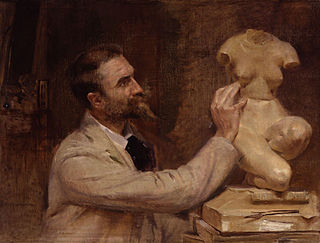
Edward Onslow Ford was an English sculptor. Much of Ford's early success came with portrait heads or busts. These were considered extremely refined, showing his subjects at their best and led to him receiving a number of commissions for public monuments and statues, both in Britain and overseas. Ford also produced a number of bronze statuettes of free-standing figures loosely drawn from mythology or of allegorical subjects. These 'ideal' figures became characteristic of the New Sculpture movement that developed in Britain from about 1880 and of which Ford was a leading exponent.

Karl Theodore Francis Bitter was an Austrian-born American sculptor best known for his architectural sculpture, memorials and residential work.

John Henry Foley, often referred to as J. H. Foley, was an Irish sculptor, working in London. He is best known for his statues of Daniel O'Connell in Dublin, and of Prince Albert for the Albert Memorial in London and for a number of works in India.
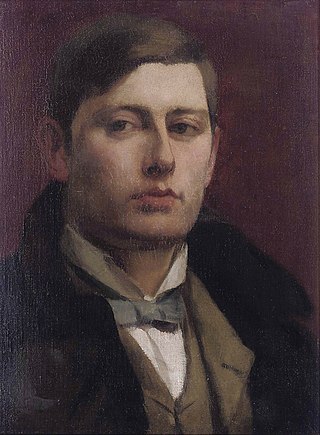
Sir George James Frampton, was a British sculptor. He was a leading member of the New Sculpture movement in his early career when he created sculptures with elements of Art Nouveau and Symbolism, often combining various materials such as marble and bronze in a single piece. While his later works were more traditional in style, Frampton had a prolific career in which he created many notable public monuments, including several statues of Queen Victoria and later, after World War I, a number of war memorials. These included the Edith Cavell Memorial in London, which, along with the Peter Pan statue in Kensington Gardens are possibly Frampton's best known works.

Sir Edgar Bertram Mackennal, usually known as Bertram Mackennal, was an Australian sculptor and medallist, most famous for designing the coinage and stamps bearing the likeness of George V. He signed his work "BM".

Thomas Thornycroft was an English sculptor and engineer.

Francis Derwent Wood was a British sculptor.
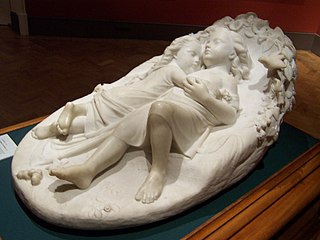
John Bell (1812–1895) was a British sculptor, born in Bell's Row, Great Yarmouth, Norfolk. His family home was Hopton Hall, Suffolk. His works were shown at the Great Exhibition of 1851, and he was responsible for the marble group representing "America" on the Albert Memorial in London.

The Machine Gun Corps Memorial, also known as The Boy David, is a memorial to the casualties of the Machine Gun Corps in the First World War. It is located on the north side of the traffic island at Hyde Park Corner in London, near the Wellington Arch, an Equestrian statue of the Duke of Wellington, the Royal Artillery Memorial, the New Zealand War Memorial, and the Australian War Memorial.
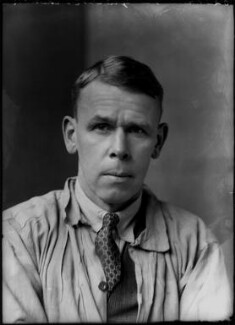
Gilbert Ledward, was an English sculptor.

Forest Idyl is a bronze statue created in 1924 by Albin Polasek while he was head of the Sculpture Department at the Art Institute of Chicago. There are several copies of the three versions of this sculpture:
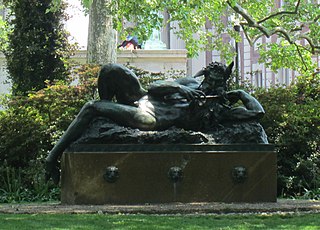
The Great God Pan is a bronze sculpture by American sculptor George Grey Barnard. Since 1907, it has been a fixture of the Columbia University campus in Manhattan, New York City.

Commodore Oliver Hazard Perry Monument is a war monument in Cleveland, Ohio that commemorates Oliver Hazard Perry and his victory at the Battle of Lake Erie in the War of 1812. Erected at the center of the city's Public Square in 1860, its Perry statue by sculptor William Walcutt was Ohio's first monumental sculpture.

John Francis Kavanagh was an Irish sculptor and artist. In 1930 he was awarded the British School at Rome Scholarship in Sculpture.

Maurice Prosper Lambert RA was a British sculptor. He was the son of the artist George Washington Lambert and the older brother of the composer and author Constant Lambert.
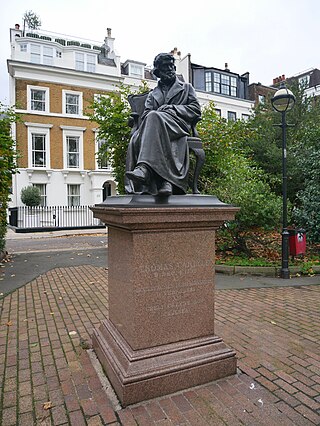
A statue of Thomas Carlyle by Joseph Edgar Boehm stands in Chelsea Embankment Gardens in London. Erected in 1881 and unveiled in 1882, it stands close to 24 Cheyne Row where Carlyle lived for the last 47 years of his life. The statue became a Grade II listed building on 15 April 1969.




















